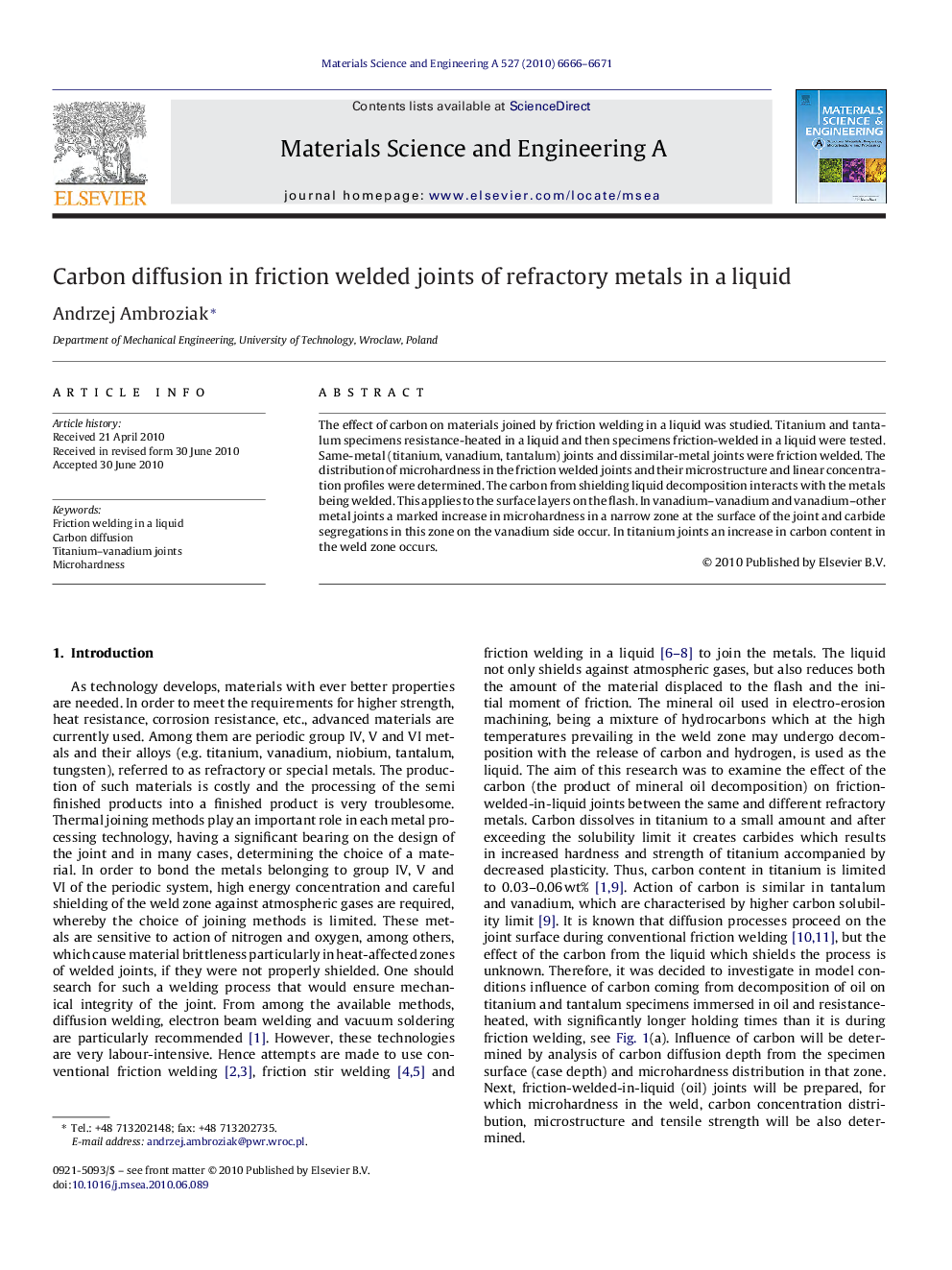| کد مقاله | کد نشریه | سال انتشار | مقاله انگلیسی | نسخه تمام متن |
|---|---|---|---|---|
| 1580161 | 1514826 | 2010 | 6 صفحه PDF | دانلود رایگان |

The effect of carbon on materials joined by friction welding in a liquid was studied. Titanium and tantalum specimens resistance-heated in a liquid and then specimens friction-welded in a liquid were tested. Same-metal (titanium, vanadium, tantalum) joints and dissimilar-metal joints were friction welded. The distribution of microhardness in the friction welded joints and their microstructure and linear concentration profiles were determined. The carbon from shielding liquid decomposition interacts with the metals being welded. This applies to the surface layers on the flash. In vanadium–vanadium and vanadium–other metal joints a marked increase in microhardness in a narrow zone at the surface of the joint and carbide segregations in this zone on the vanadium side occur. In titanium joints an increase in carbon content in the weld zone occurs.
Research highlights▶ The carbon from shielding liquid decomposition interacts with the metals being welded. This applies to the surface layers on the flash. ▶ In vanadium-vanadium and vanadium-other metal joints a marked increase in microhardness in a narrow zone at the surface of the joint and carbide segregations in this zone on the vanadium side occur. ▶ In titanium joints an increase in carbon content in the weld zone occurs.
Journal: Materials Science and Engineering: A - Volume 527, Issues 24–25, 25 September 2010, Pages 6666–6671